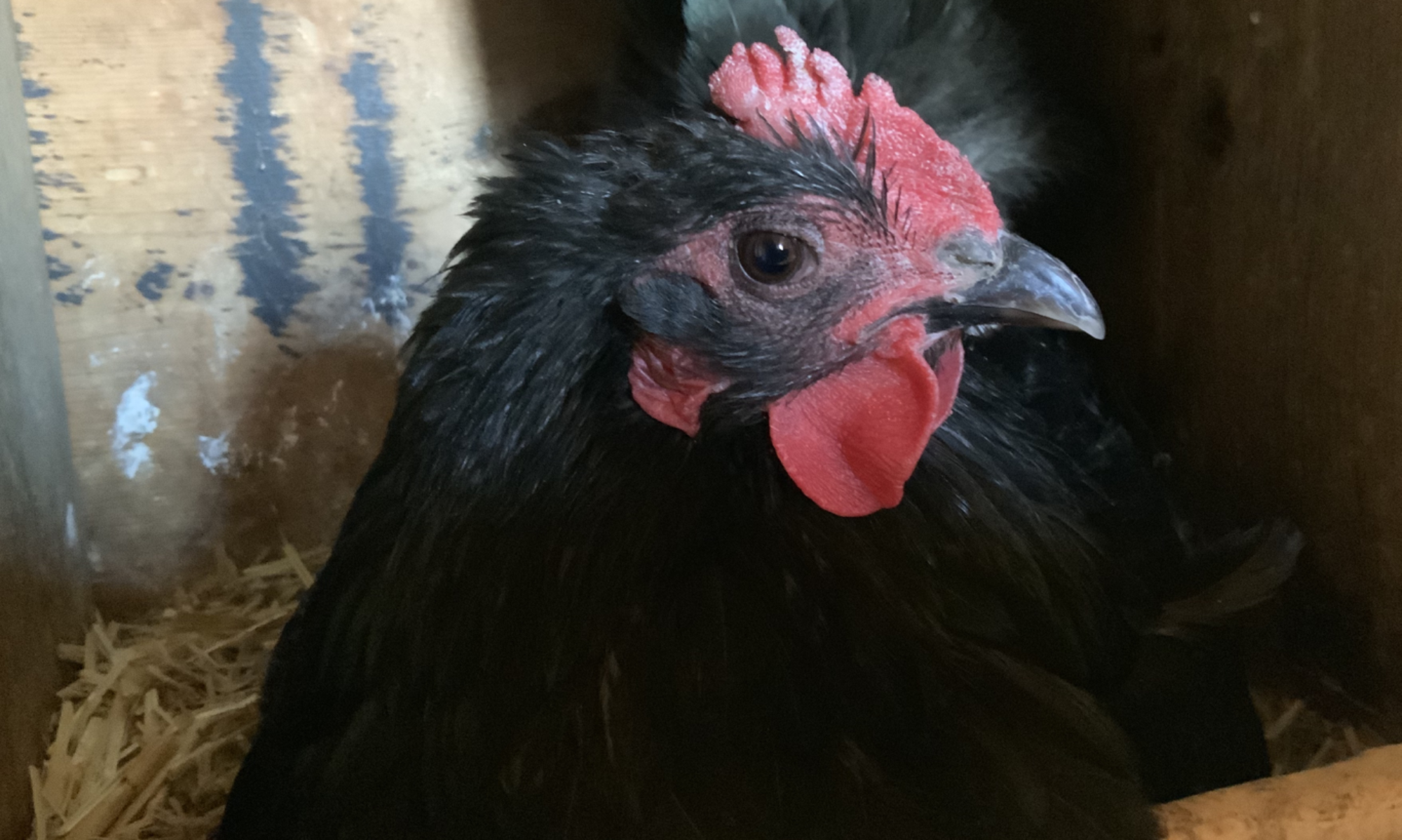With the weather turning cold and temperatures dipping into the negatives, I worried about my chickens staying warm. I knew that chickens had down feathers and fluffed up to keep warm, but I didn’t quite understand all the particulars, so I did some research. Chicken feathers are actually kind of fascinating and complex, as well as being functional.

Chickens lose feathers and grow new ones here and there throughout the year. No big deal. Then once a year they go through a major re-freshening of their plumage called a molt. It can happen at any time, but a molt usually occurs in the late summer or early fall and generally lasts about 7 weeks. Chickens lose their feathers beginning at the top of their heads and working their down until they have put on a new winter coat just in time for the cold! There is always the exceptions to the rule. I have two Golden Laced Wyandottes who decided that mid-December was a good time to shed their feathers. Good thing for them they have warm friends in snuggly spaces.

When you look closely at chickens, you will notice that there are a few different types of feathers that adorn their appearance. Chickens that have a smooth, sleek outward appearance are said to be hard-feathered birds. Chicken breeds like Silkies, which appear all fluffy and soft, are called soft-feathered birds. Then there are the chickens that have a feather mutation which causes the feather to twist or curl. These birds are called Frizzles. My flock is presently made up solely of hard-feathered chickens.
The outer feathers on a chicken are called contour feathers. These feathers include the wing and tail feathers, and most of the body feathers. These feathers are what give each chicken their shape and color. You will notice that no two chickens are exactly alike in shape, size and coloration. I have two Speckled Sussex hens. One has a ton of speckles, while the other has half as many speckles. These speckles or lack of, are a result of the pigments in the contour feathers. Contour feathers are made up of what are called barbs and barbules that act kind of like Velcro, allowing the feather to interlock creating a stiff, smooth, flat plane. When chickens preen, they are smoothing and locking these barbs together.

There are several different types of contour feathers, each structured a little differently for different purposes. At the base of the head, around the chickens neck are the hackle feathers. These feathers can be colored differently than the rest of the bird. On a hen the hackles are generally round tipped. On roosters they are longer and pointed at the end and might be iridescent. You’ll notice that when a chicken gets riled or angry, these feathers stick up.

On the wings there are three different types of contour feathers, each section overlapping the other. The feathers on the outer layer close to the base of the wing are small, round and called covert feathers. Then there are longer feathers called secondaries. These feathers provide lift in soaring and flapping. Finally at the tip of the wing are the primaries. These are the longest and strongest feathers.

Then there are the down feathers. These are the feathers closest to the body. They do not have barbs and barbules, so are soft and fluffy in appearance. These feathers can be found underneath, around and in between the contour feathers and are generally on the underside and abdomen of the chicken.

Chicken feathers are made out of Keratin, the same stuff that our hair and fingernails are made out of. Each feather has a central stem called a shaft. The base of the shaft where it attaches to the skin is called the quill. A new, immature feather has a supply of blood running through it which will bleed if broken, cut or plucked. As a feather begins to emerge from the skin it looks like a pin and is often referred to as a ‘pin feather’. This feather is twisted tightly and covered with a thin papery substance. As the feather matures and through grooming, the papery covering is removed and the new feather expands. When the feather is fully mature, the blood supply within the shaft will dry up. Each feather grows out of a follicle, similar to our hair follicles. There are groups of tiny muscles around these follicles that allow chickens to raise and lower their feathers. This is what lets our chickens ruffle up their feathers, helping them to create air pockets that trap body heat, helping our chickens stay warm. Then they will all snuggle together tightly, sharing the warmth.

It is thought that, as cute as sweaters or chicken coats may be, they interfere with the natural process a chicken uses to warm itself. Clothing flattens the feathers and doesn’t allow for the making of fluffy, body warming air pockets. It is also believed that the molting process is uncomfortable for chickens and putting anything over emerging pin feathers is actually painful. Sometimes it’s just best to let Mother Nature handle things her way. In the case of extreme conditions, or with sick birds, added care should be offered on our part: extra insulating bedding, added food rations, warm water, heat lamps used with care. But, at least now I know why a down comforter is so warm!
Sources:
https://www.dummies.com/home-garden/hobby-farming/raising-chickens/more-than-you-need-to-know-about-chicken-feathers/
https://www.backyardchickencoops.com.au/feather-structure
http://www.thewildclassroom.com/biodiversity/birds/aviantopics/feathersandPlumage.html

